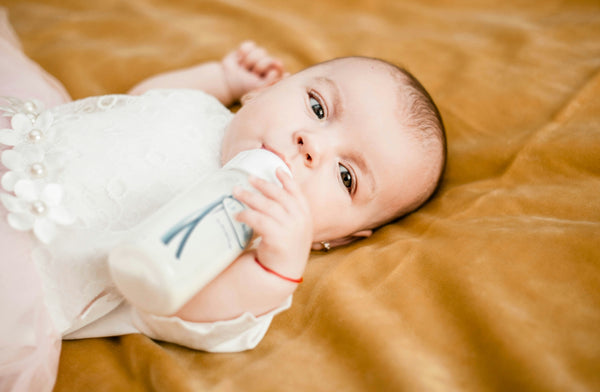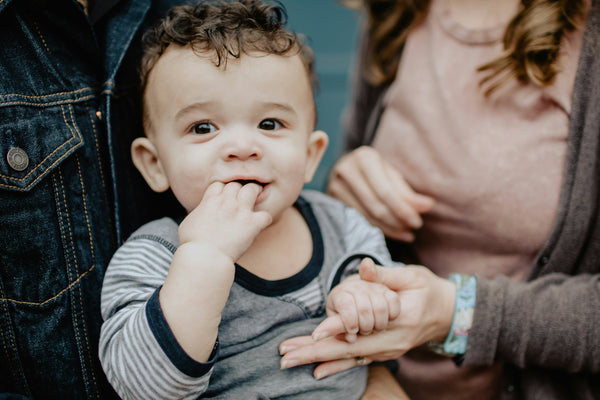The Psychological Reasons Why Kids Struggle with Potty Training
share this article

Potty training is a milestone in early childhood and can often be seen as a rite of passage into a less cumbersome time period for parents (bye-bye diapers!). But for many families, the potty process is far from straightforward.
Why do some kids seem to master it easily, while others face setbacks and resistance? The answer lies in a mix of developmental readiness, psychological barriers, and environmental factors.
Understanding these challenges from a psychological perspective can help parents navigate this milestone with more confidence and less frustration.
The Role of Developmental Readiness in Potty Training
Successful potty training often begins with readiness (Brazelton, 1995). It is not just about age, rather the whole kid, including physical, cognitive, and emotional growth.
For example, your kid must have the physical ability to control their bladder and have bowel movements, the cognitive ability to connect bodily signals with using the toilet, and emotional readiness to take on this new responsibility.
Readiness skills are nuanced and while it helps for your little one to have these skills when you begin potty training, it is not always necessary. Some more common readiness skills (Baird et al., 2019):
-
Recognizes the urge to go
-
Asks to wear “big kid” underwear
-
Shows continued interest in using the toilet
-
Follows simple instructions
Readiness is only one piece of the very large potty training puzzle. Factors such as child temperament, personality, and even gender can influence readiness.
Research has found that girls tend to develop toilet-training skills earlier than boys. For example, girls typically stayed dry during the day by around 32.5 months, while boys reached this milestone closer to 35 months.
Girls also showed signs of readiness sooner, like being interested in using the potty (around 24 months for girls versus 26 months for boys) and staying dry for at least 2 hours (26 months for girls compared to 29 months for boys; Schum et al., 2002).
For toddlers and kids with developmental differences or sensory sensitivities, a more individualized and tailored approach may be necessary to support their success.
The Risks of Early or Late Potty Training
Parents often feel pressure to start potty training for numerous reasons (daycare or school settings, same-age peers, familial pressure), but pushing a kid who is not ready can lead to anxiety, frustration, and resistance.
On the other hand, waiting too long may lead to a kid that is overly connected or reliant on their diaper, making the toileting process more challenging.
The key is to focus on your little one’s unique readiness rather than comparing their progress to others. Meeting your kid where they are developmentally is the first step toward success.
If external pressures arise, consider what can be adjusted or how you can redirect your energy into teaching readiness skills and creating learning opportunities to build toileting skills at home.
Psychological Barriers to Potty Training
Anxiety and fear
For many kiddos, the toilet itself can be intimidating. Concerns about the overly noisy flush, sitting on the cold toilet seat, feeling unsteady while sitting, or the bathroom environment itself may create hesitation or aversion.
These fears can intensify if your kiddo has had a previous negative experience or if the worries go unaddressed.
Here's how you can help with gradual desensitization. This is a powerful tool for addressing concerns in younger kids (Greer et al., 2016).
For example:
-
Spend some time doing brief, no pressure exposure, such as sitting on a closed toilet lid playing with a favorite toy
-
Let younger kids observe siblings using the bathroom to normalize the process
-
Use a potty seat insert and a stool to support your kid’s feet
History of Constipation
Another source of stress can stem from a history of constipation or painful bowel movements may make your little one hesitant to use the toilet because it is new and unfamiliar. This hesitancy often develops from an association between bowel movements and discomfort, making your kid more likely to avoid the toilet.
Supporting gut health can play a key role in easing this transition and helping kids feel more comfortable, while preventing painful bowel movements.
In addition to hydration and fiber rich foods, prebiotics, like those found in chicory root inulin and Human Milk Oligosaccharides (HMOs), can nourish the gut microbiome and promote regularity, making it easy for your kid to pass bowel movements.
Prebiotics like Begin Health's Growing Up Prebiotics offer an easy way to incorporate these benefits into your little one’s diet. It is tasteless, textureless, and can be mixed into their favorite beverages or soft foods, making it a simple addition to daily routines to help them stay regular.
Behavioral Resistance
Sometimes, potty training becomes a battleground for control. Behavioral resistance during potty training is common, especially if training feels pressured. Parents may inadvertently reinforce the resistance by reaching strongly to accidents or refusals.
Strategies for parents:
-
Give Your Kid a Sense of Control: Offer choices wherever possible, such as picking out a potty seat or deciding whether to use the potty before or after a specific activity. This can help reduce power struggles.
-
Focus on Positive Reinforcement: Celebrate small successes, such as sitting on the potty, even if no toileting occurs. Do not punish for accidents; instead, calmly clean up and reassure your little one that they’ll get it next time.
-
Keep Expectations Realistic: Recognize that potty learning is a process, and setbacks are normal. Avoid overemphasizing outcomes like “success” or “failure,” which can create unnecessary pressure.
The role of environmental and parental factors
Parental stress and inconsistency can amplify struggles during potty learning.
Research shows that punitive or overly strict approaches may backfire, leading to withholding behaviors or heightened worries (Schonwald et al., 2004).
Strategies For Parents:
-
Create a Calm and Supportive Environment: Stay patient and reassuring, even during accidents. Modeling a calm reaction helps your kid feel safe and reduces the emotional charge around potty training.
-
Stick to a Routine: Consistency builds predictability, which is especially helpful for kiddos who thrive on structure. Set regular potty times, such as after meals or before bedtime, and stick to them as much as possible.
-
Take Care of Yourself: Addressing your own stress can improve the overall environment for potty learning. Take breaks when needed.
-
Collaborate as a Team: Ensure all caregivers (e.g., parents, grandparents, teachers) are on the same page about expectations and strategies, avoiding mixed messages or inconsistencies that could confuse your little one.
Summary
Potty training is a significant milestone, but it often comes with challenges influenced by developmental readiness, psychological barriers, and environmental factors.
By focusing on a kid’s unique readiness, addressing fears or resistance with patience, and fostering a supportive, consistent environment, parents can navigate this process with greater confidence and success.
















